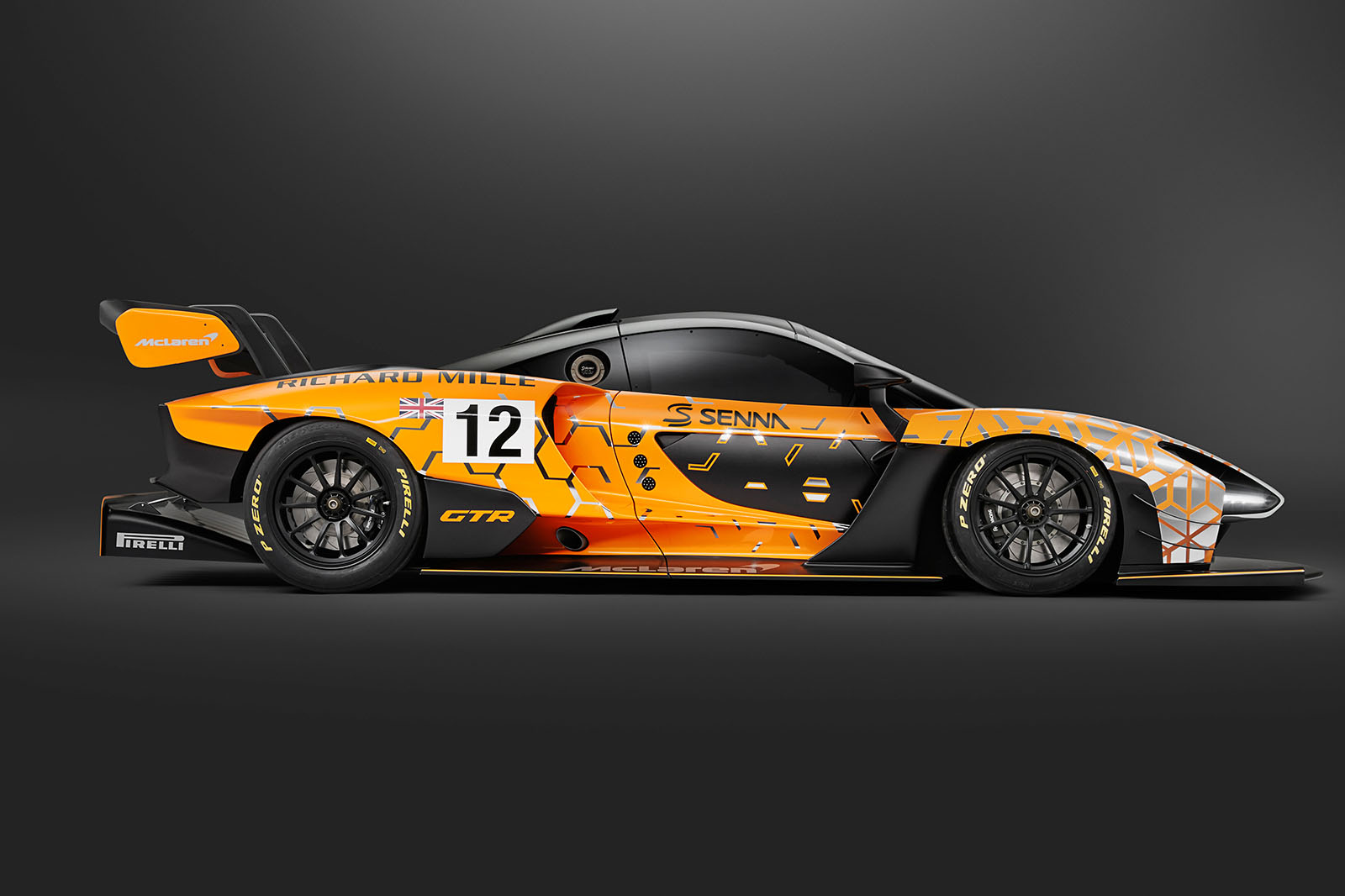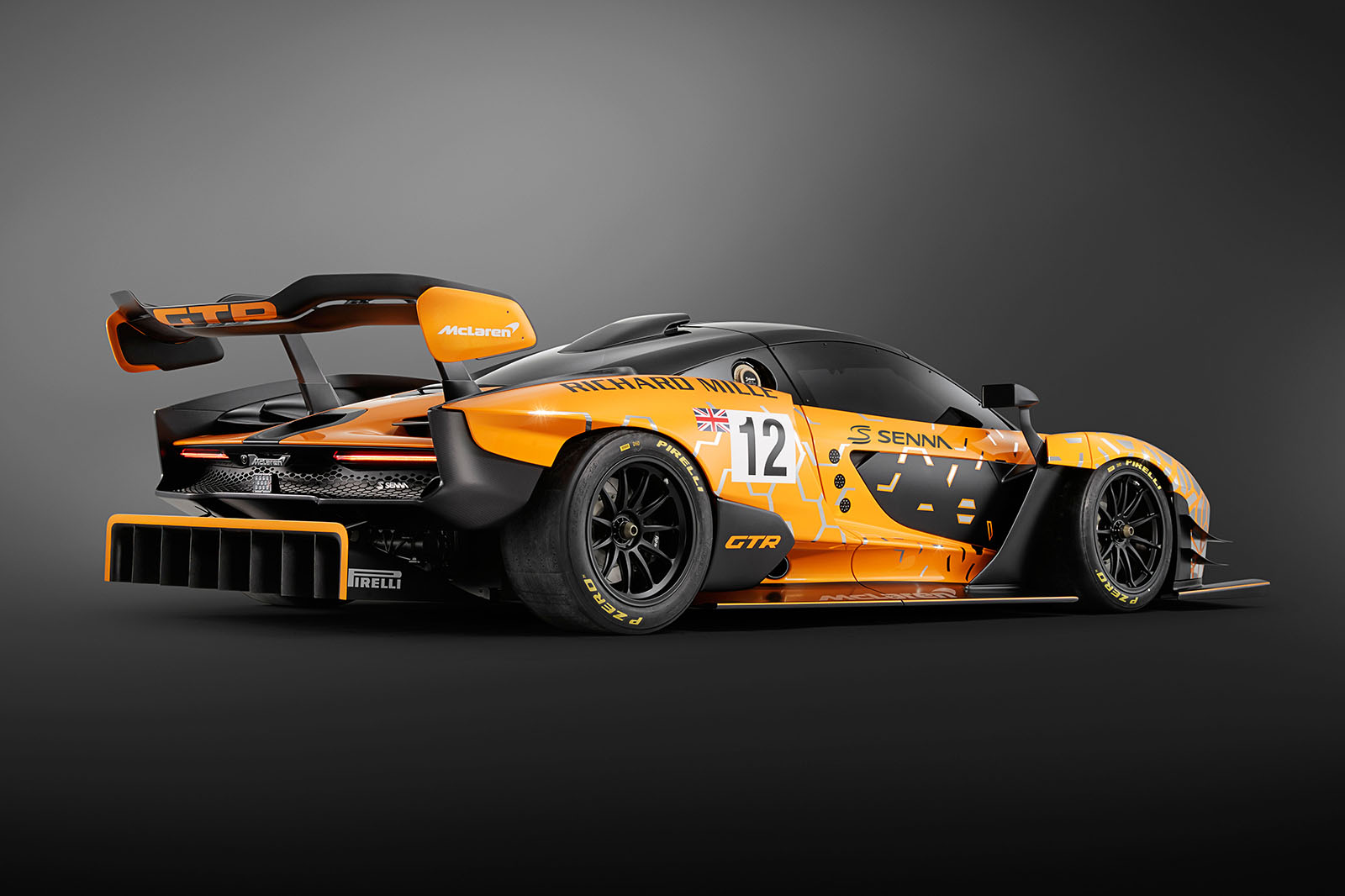McLaren’s racing engineers have been let loose on its newest supercar to produce this, the Senna GTR concept – a 1000kg of downforce-producing track-monster that’s more focused than even the P1 GTR.
Described as the fastest machine to roll out of Woking this side of a Formula 1 car, this Geneva motor show concept is a preview for what's to come when an extreme take on the formidable Senna Super Series model is launched.
In the GTR, the Senna’s twin-turbocharged 4.0-litre V8 has been reworked so it now produces “at least” 814bhp – up from the standard car’s 789bhp. It sends drive through what the brand calls a “race-style transmission”.
Opinion: Why the world needs more cars like the McLaren Senna GTR

McLaren P1 GTR review
A spokesman told Autocar that it was too early to confirm exactly what this meant, but it suggests the car will use something of higher specification than McLaren’s regular seven-speed dual-clutch gearbox, which is featured in the standard Senna.
Also unconfirmed but likely is an advanced adjustable traction control system. This technology would enable drivers of varying abilities to progressively alter an electronic safety net that controls torque to the driven wheels; such a system was used on the P1 GTR.

McLaren says the Senna GTR will out-accelerate a standard Senna but it has yet to confirm straight-line performance figures. The regular car can charge from zero to 62mph in 2.8sec and takes a total of 6.8sec to reach 124mph.
With no road regulations or pedestrian safety tests to worry about, McLaren’s aerodynamicists have extracted a further 200kg of potential downforce from the Senna’s body. They’ve gently resculpted its panels, added an enormous front-splitter and bolted on a rear diffuser that shames those used by Le Mans GTE racers. Add the Senna’s active rear wing and downforce now peaks at 1000kg, 400kg more than the P1 GTR.
To help road-holding, the Senna GTR also features a wider track than the standard car, as well as a maximised front splitter and rear diffuser.

To handle these enormous high-speed loads, the Senna GTR uses revised double wishbone suspension and Pirelli slick tyres. A carbonfibre Monocage III skeleton remains at the car’s core, but the GTR is expected to be around 50kg lighter than the 1198kg Senna when dry, because it can do away with road-specific kit such as airbags, a handbrake and an exhasust muffler, and can make use of lightweight materials such as plexiglass.
Aston Martin Vantage GTE "proves transferable tech"
This means the GTR will produce more than 596bhp per tonne, which would be 108bhp fewer than the hybrid P1 GTR. However, the Senna GTR is an more track-focused package that its makers say can lap McLaren’s test circuit quicker than anything else it has built with a roof. McLaren says only its F1 cars can clock a quicker time.

McLaren Automotive design engineering boss Dan Parry-Williams said this level of pace was possible because the Senna was designed “with the full spectrum of road and track requirements in mind” from the outset.
“The McLaren Senna GTR concept unveiled in Geneva is not the finished article but it does give a clear indication of our thinking for the car, which promises to be the most extreme and exciting McLaren to drive for many years, if not ever,” he said.

Following the concept will be a run of 75 Senna GTRs. The car, which is the latest in a lineage that started with the 1995 24 Hours of Le Mans-winning F1 GTR, will be priced from £1 million before taxes (so that’s £1.2m including VAT in Britain) and hand built at McLaren’s Production Centre.
The GTR is the only remaining version of the Senna currently on sale because all 500 examples of the regular car have been allocated; that model started at £750,000. However, insiders predict it will be sold out by the end of the week, especially as it promises the performance of the Aston Martin Valkyrie and Mercedes Project One for around half the price.
Read more
McLaren MSO Senna Carbon Theme revealed
Aston Martin Valkyrie revealed in near production form
McLaren 720S

Source : autocar






